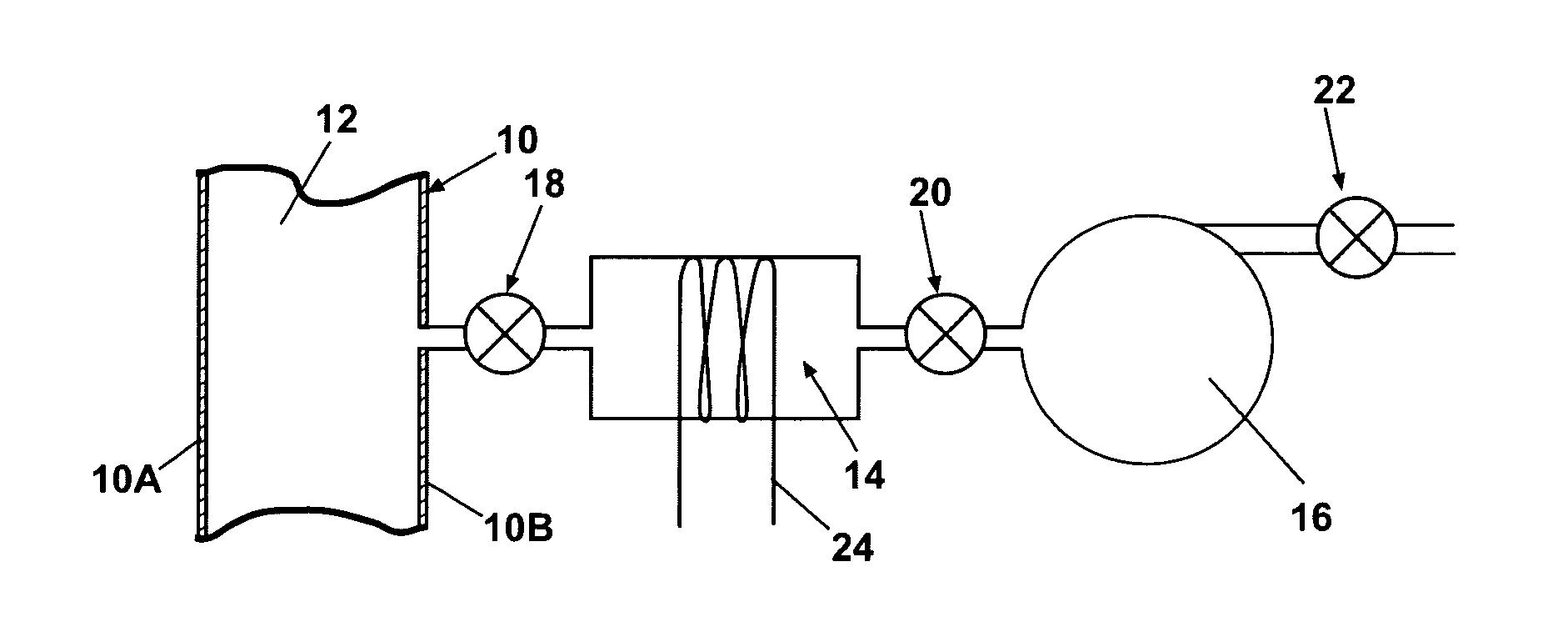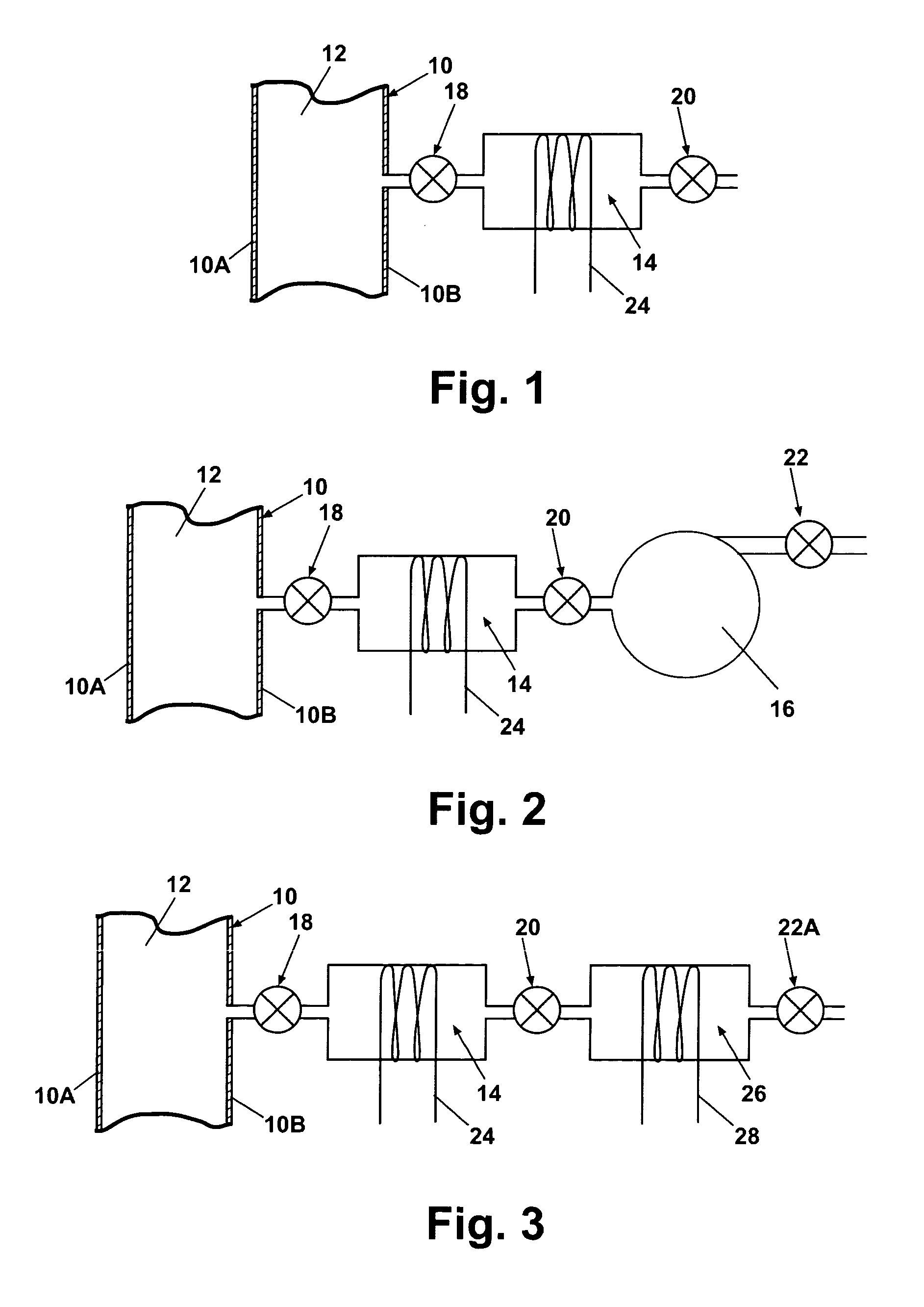Vacuum insulated refrigerator cabinet and method for evacuating the gas-tight insulated wall thereof
- Summary
- Abstract
- Description
- Claims
- Application Information
AI Technical Summary
Benefits of technology
Problems solved by technology
Method used
Image
Examples
Embodiment Construction
[0017]With reference to FIG. 1, a refrigerator cabinet comprises a insulated double wall 10 comprising two relatively gas impervious walls 10a and 10b filled with an insulation material 12 that can be evacuated. The insulation material 12 can be an inorganic powder such as silica and alumina, inorganic and organic fibers, an injection foamed object of open-cell or semi-open-cell structure such as polyurethane foam, or a open celled polystyrene foam that is extruded as a board and assembled into the cabinet. The insulation material 12 is connected to a gas-storage container 14 in which an adsorption stage is performed. Isolation valves 18 and 20 will be placed between the cabinet and adsorption stage 14 and between the adsorption stage 14 and the atmosphere respectively. During a majority of the time of refrigerator operation, only valve 18 will remain open, in order to continuously evacuate the cabinet insulation 12. When the performance of the insulation is lower than a predetermin...
PUM
 Login to view more
Login to view more Abstract
Description
Claims
Application Information
 Login to view more
Login to view more - R&D Engineer
- R&D Manager
- IP Professional
- Industry Leading Data Capabilities
- Powerful AI technology
- Patent DNA Extraction
Browse by: Latest US Patents, China's latest patents, Technical Efficacy Thesaurus, Application Domain, Technology Topic.
© 2024 PatSnap. All rights reserved.Legal|Privacy policy|Modern Slavery Act Transparency Statement|Sitemap


